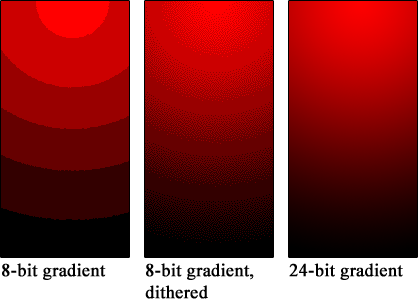Color Banding When Streaming – Is There a Fix?
You just got a new TV and it looks terrible! Not all the time, but definitely when you are streaming. Oftentimes, the colors look weird. They are full of weird artifacts that look like lines. What’s going on? This color banding when streaming is annoying. Is there a fix? Well…we’ve got some bad news…
What’s Happening
In order to stream content, that content must be compressed. Just like streamed audio, services are looking to give you as much content as possible but at nearly any connection speed. This means that the size of the file must be as small as possible. When a file is compressed so that it is smaller, some of the data is lost. The algorithms that are responsible for that compression take into account what will be noticed and what won’t. On MOST displays.

If you are noticing color banding while streaming, it is likely a combination of the service you are using (YouTube is a major culprit) and your display. If you have a newer 4k, HDR display, it is capable of recreating tons of colors. Usually, these displays are larger making the banding issues even more noticeable. Watching the same content on an older display or something smaller (like a tablet or phone) will likely be fine.
Take Away
There is a reason people still buy discs. These compression (and other) issues rarely occur on discs. When you are streaming, color banding is just one of the problems you may encounter. The only fix, unfortunately, is to use a smaller or less capable display. If possible, you could find a higher-quality streaming service or buy the disc. The last solution will be the best as you can have the highest quality audio and video.



It’s incredibly frustrating when the excitement of a new TV is dampened by unexpected issues like color banding, especially during streaming. Color banding, with its odd lines and artifacts, can indeed detract from the viewing experience. This issue often stems from a combination of factors, including the streaming service’s compression techniques and the TV’s color depth capabilities. While it’s disheartening to hear there might not be an easy fix, exploring a few potential solutions could be worthwhile. Adjusting your TV’s picture settings, ensuring it operates on the latest software update, or even experimenting with different streaming services or connection methods might mitigate the problem to some extent. Unfortunately, some issues are inherent to the technology and the way content is delivered online. Your honesty in addressing this common concern helps set realistic expectations, and sharing any workarounds or tips you discover will undoubtedly be appreciated by many facing similar frustrations.